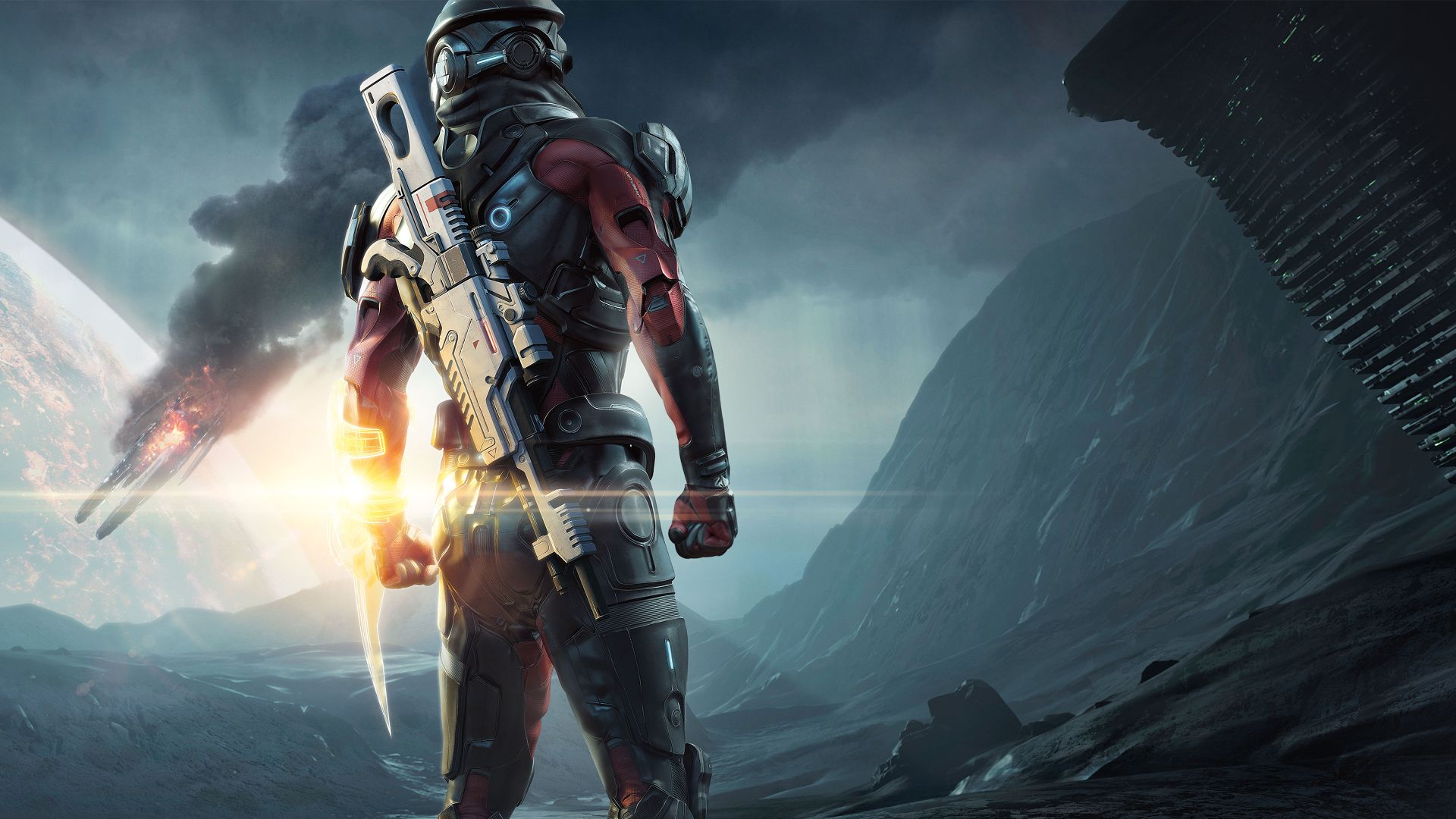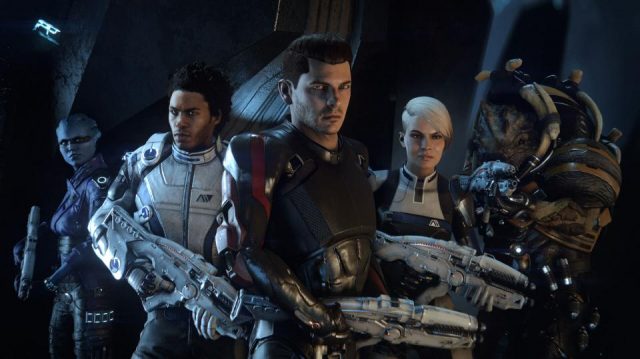
Close to ten years ago, I excitedly made my way to my favourite game shop and purchased a copy of Mass Effect, expecting to instantly fall in love with it and be lost in its digital stars for days. The hype was palpable, and to its credit the game looked amazing. Not only that, but it mixed together some of my favourite genres, including third-person shooters, RPGs and, when combined, western RPGs.
After hearing great things about the game, I excitedly ripped the plastic off of its jewel case and settled in for a lengthy adventure. However, while I enjoyed what I played — for the most part, at least — I began to wonder when I’d begin to fall in love with it like everyone else had. That being the fantastically amazing game I’d heard lots of incredible things about. The same one that was all the rage online, on my friends list, and with my closest friend.
Yet, for some reason, Mass Effect never fully hooked me. I mostly enjoyed the eight to ten hours I played it for, but eventually got sidetracked by another game after being annoyed by some of its vehicular exploration segments. That was never the plan, but it happened. And the same thing occurred when I went back a few years ago and restarted it. I got about eight hours into the campaign, then started playing something else for a bit and didn’t go back. I told myself I would, but I guess that was a lie.
To this day, I still don’t know exactly what it was about the first game that never fully caught on with me. It was beautiful, epic and full of interesting content, but something about it just wasn’t really for me. Still, I made the mistake of buying Mass Effect 2 at launch, for its full $60 price tag, while planning to play through the first one and get to it afterwards. Alas, that never happened, because I was buying and renting too many games at the time, while also going to school.
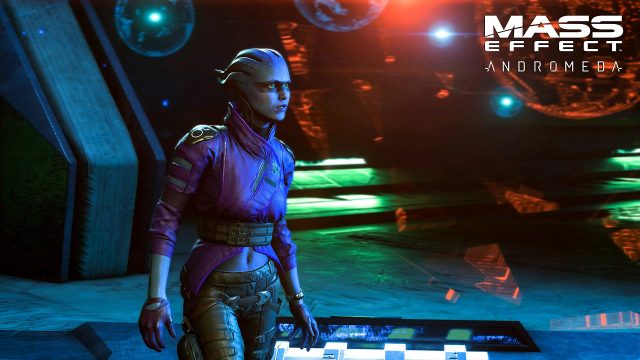
Truth be told, the above (and the fact that I’ve only ever watched a friend play part of Mass Effect 3 — which looked beautiful and impressive, to boot) is one of my hidden gaming shames. I feel like I missed out on something great, and keep planning to go back and try again. New games just never stop releasing, and life also gets in the way.
I wanted to write the above, so as to be clear, honest and transparent before getting into the depth of this review of Mass Effect: Andromeda. A game that piqued my interest and impressed me with its trailers, thus making me want to check it out when it first became available on EA Access.
In fact, my first several hours with this game came through its five hour-long trial, which I’d saved an old EA Access code for. During that time, Andromeda‘s far reaching story managed to hook its talons into me, and its enjoyable gameplay made me want to play more. For those reasons, I ended up reaching out and requesting a review code.
Disappointingly, that same amount of interest and enjoyment didn’t hold up throughout the rest of the thirty or so hours that I spent with this game, and now that I’ve watched the credits roll I’m left feeling kind of ho-hum. That’s not to say that it’s bad, because it’s not. It’s just not the epic, intergalactic RPG that it could’ve been, and it’s likely that longtime fans are going to be disappointed by it. At least to some extent.
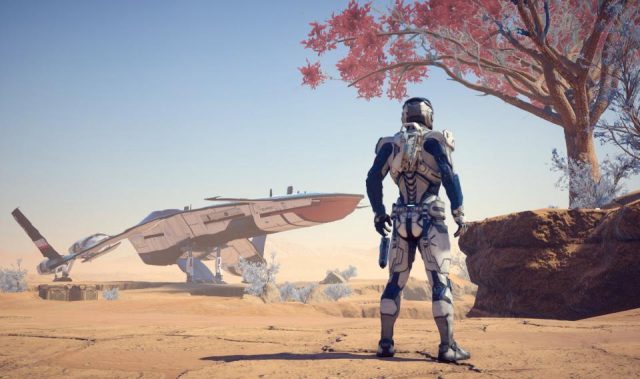
Mass Effect: Andromeda begins in-between Mass Effect 2 and Mass Effect 3. It’s at this juncture where an N7 named Alec Ryder sets off for new pastures, with more than one-hundred-thousand cryogenically frozen others from varying species (human, Turian, Asari, and Salarian). All left the Milky Way with hopes of safely making their way to new “Golden Worlds” — planets in the Andromeda Galaxy that were examined and determined to be able to sustain life.
Of course, as is almost always the case in fiction, things don’t end up going as planned. As the crew of the human ark (dubbed the Hyperion) awakens from its six hundred year-long cryoslumber, it begins to notice that something isn’t right. A strange, dark and glowing substance has taken up root in the galaxy, and its far reaching tentacles have drained said planets of their vitality. And, when they end up leaving the familiar confines of their ship in order to investigate, all hell ends up breaking loose, thanks to the trappings of an alien world and a new, hate-filled species that has already begun to investigate it.
Those asshats are the Kett, and they’re one of two new types of enemies that you’ll be facing off against. Led by the Archon — a somewhat boring and stereotypical evildoer who does most of his work behind-the-scenes — their being in the Andromeda Galaxy makes things even more dangerous.
Joining the Kett are the Remnant, an ancient race of mechanical beings who once thrived in Andromeda. It’s their ancient technology, vaults and weather controlling systems that you’ll be dealing with as you try to make this new, intergalactic world hospitable again, while also trying to solve the mystery of what, exactly, is going on. There’s more, too, as once you make it to the Nexus (the game’s hub, or Citadel if you will), you’ll also learn that only the human ark is accounted for. The other three? Well, they’ve somehow disappeared without a trace.
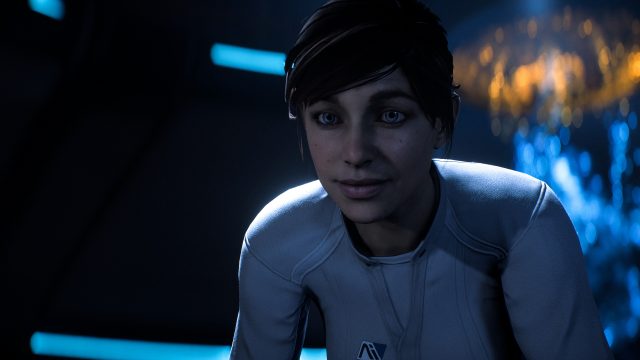
Unfortunately for Alec Ryder, the human Pathfinder whose charge the Hyperion happens to be, his time spent in Andromeda ends up being very brief. It’s not long before — during an early run-in with the Kett and an attempt at changing a planet’s weather from bad to good using Remnant tech — he ends up having to sacrifice himself so that the player’s customized character can survive. This is how your chosen male or female Ryder (whose name, appearance, class and profile you get to customize to your liking) ends up becoming the Pathfinder and having to take responsibility for the many slumbering souls who’ve also made this long journey.
It doesn’t matter if you choose a male character or a female one, because Ryder is written in a way that befits both genders. Well, for the most part, at least, as there were times where my female Ryder was called sir, or something to that extent. Either way, both siblings (twins, in fact) exist in-game, and both factor into how the campaign’s story plays out.
Regardless, I wouldn’t recommend going into this game expecting award worthy writing. What’s there does the job, and is definitely serviceable. It’s even solid for the most part. However, that’s not to say that it doesn’t have some cringe-worthy moments, or suffer from a lack of depth at times.
Things begin with such great potential, presenting an intriguing opening and epic premise that hooked me and made me want to learn more about what was going on. These heights aren’t maintained throughout Mass Effect: Andromeda‘s campaign, however, as it ends up becoming less exciting as it goes along and eventually starts to become both boring and tedious. It’s unfortunate, but no matter how much I wanted to love this game and enjoy its storyline, there came a point where I wanted it to end so that I could move on to something else. I made sure to stick with it until the credits rolled, but the repetition honestly got to me a while before that happened.
The main problem with Mass Effect: Andromeda is that it’s just not all that exciting. Sure, it has its moments, but the majority of the game is spent doing tedious tasks, many of which are basically just fetch quests. It’s boring, very dated design-wise, and led to me skipping a lot of the side quests after a while.
It also doesn’t help that Ryder’s ship (the Tempest) can only be accessed in space. If you need to talk to a member of your crew, or do some research, you’ll generally have to go back to your ship and leave the planet you’re on, then do everything in orbit before moving on. As you’d expect, this creates a lot of unnecessary time waste and gifts the player with tons of boring loading screens in the guise of takeoff and landing animations.
Being that this is a game about colonizing an unruly world, you can also expect to spend a lot of time trying to make different planets habitable. You see, there’s a gigantic galaxy to explore, but only several planets really allow you to land and adventure. These are (predominantly) the “Golden Worlds,” where humanity hopes to thrive and make new homes. The others are just there to be scanned and probed for resources that can be put towards crafting weapons and armor, or sold in markets. The whole research and crafting system is convoluted and tedious, though, and it’s not always clear as to what’s best to do with all of your resources, or even how to go about it all.
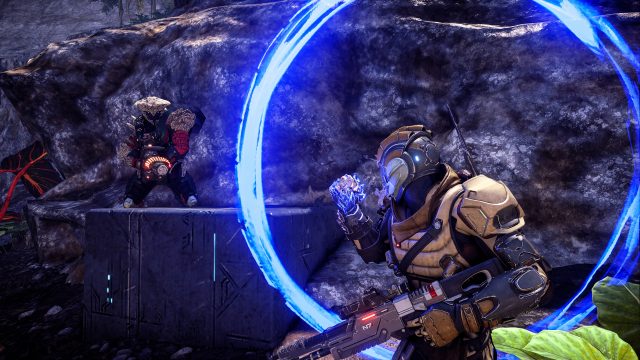
A large part of this set-up involves driving across these planets in the Nomad (a boring vehicle that needs to be put into a slower gear in order to manage even small inclines), as you look for Remnant vaults and NPCs with side quests. Hours will be spent going into similar-looking vaults and exploring them for terminals, while solving basic puzzles. But, to really bring a planet to life, you’ll also need to find terminals on the planets’ surfaces.
It’s at these locations where fun really goes to die.
What’s so bad about these (mostly) secondary quests is that they’re mind-numbingly tedious. You simply go to the relics, take out their Remnant guards, and then look around the areas for ancient symbols, using Ryder’s climbing abilities and his/her jet pack.
Yes, there’s some Vanquish in your Mass Effect now. Just a bit, though.
Once you’ve found the few symbols scattered around each terminal (which can be harder and more frustrating than it sounds), you must then go to the terminal and use said symbols to finish a Sudoku-inspired puzzle. It’s simple to a fault, and is a mechanic that’s repeated far too often throughout the game.
That part of Mass Effect: Andromeda is just as fun as it sounds, that being none. In fact, I eventually gave on revitalizing a couple of the planets, because I couldn’t stand doing it any longer. It was too boring, too tedious and too annoying. Plus, it didn’t help that the planets, themselves, were so boring and often barren for miles, not to mention wholly uninspired. There’s the desert planet and its radiation, the Hoth like winter planet with its extreme cold and need for huddling up beside heaters, a dark jungle planet that is a bitch to navigate due to large, unnecessary walls, and a standard planet with more traditional rocks and grass. They’re all so familiar and boring, which is a shame.
Another questionable thing about this campaign is how early it introduces all of its major players. Ryder actually gets every one of her allies — almost all of which are from familiar species, outside of one somewhat interesting Andromeda native — around the second planet. It felt weird and too sudden, but then again, Andromeda‘s structure is more than a little strange in general.
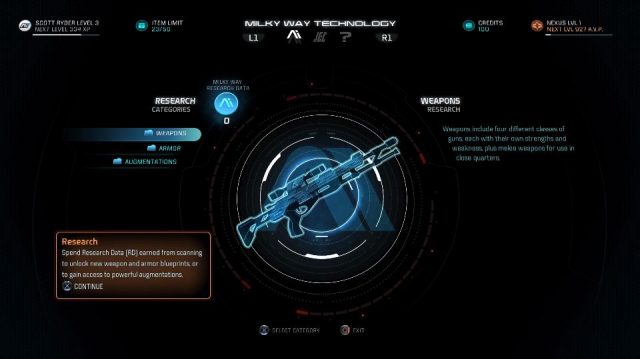
This ragtag group has things going for it, and offers some solid help during combat encounters, but it’s not the most memorable assembly of allies. Then again, the whole game has that same issue, and is unfortunately more forgettable than it is memorable, which it pains me to say.
Now, given that Mass Effect: Andromeda has been out for a bit, it’s likely that you’ve read about or seen videos covering its visual anomalies and animation issues. Truth be told, this is far from a flawless game, technically speaking. While it can look really nice at times (like during the final stage and its concluding cutscenes), a lot of what’s presented here leaves something to be desired. The character models look dated, with many feeling uninspired, and some of the animations look off. There’s also pop-in, quite a bit of stuttering, and some screen tearing, but truth be told, others seem to have experienced worse glitches than I. The worst I dealt with was a freeze following a lengthy and challenging standoff against multiple enemies (one of which, as the game seems to love, was always able to kill me in one hit).
After toying around with some of the middling character customization options, I ended up deciding to go with the basic female Ryder model, which may have been a mistake. It all boiled down to me expecting more polish than I saw, because Michelle Ryder (as I named her) had a face that sometimes resembled putty. Her skin and facial animations occasionally looked inhuman, and it took me out of things when — after her father died early on — it looked as if she was laughing. Then again, she had that shit eating grin on her face throughout a lot of the game, and it lessened my immersion at other points as well.
The voice acting also fluctuates in quality, while the music is fitting. But overall, this is a game that feels dated in almost every aspect. Even its attempt at introducing cover-based combat with maneuverability (the aforementioned vertical jet and horizontal boost) feels half-baked. Cover can often leave you exposed despite its reason for existing being to provide a hiding place, and jumping into the air during an encounter leaves you open to lots of gunfire and renders it almost pointless.
Ryder’s shooting mechanics are also on the basic side. Sure, they’re serviceable and get the job done, but there’s little in the way of creativity outside of weapon mods. You simply pick four weapons (which can be chosen from pistol, assault rifle, shotgun and sniper rifle categories) and use them as you see fit. Keep in mind, though, that ammo can be scarce, and that none of these weapons has a heat sink or the ability to overheat, like the weapons in previous Mass Effect games. As such, you’ll be forced to change weapons more than you may like.
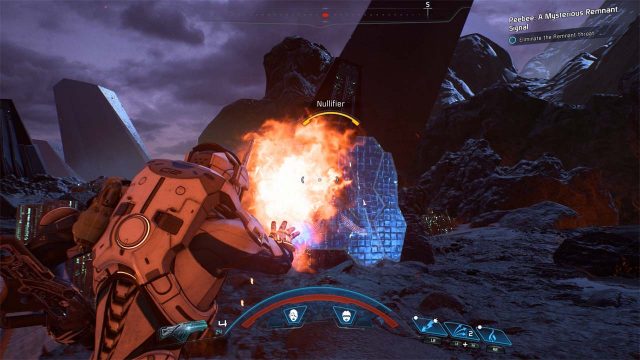
Now, before we go any further, I’d be remiss if I didn’t mention that there is a multiplayer component to be found here, although it’s not likely to set the world on fire or keep people invested for months on end. What’s there is a pretty familiar horde-style experience, which I’ve read is similar to what Mass Effect 3 offered. The player, and up to three others, can fight against waves of enemies, while completing objectives. And, as per usual, there are a handful of different classes to choose from and customize as you level-up and earn both mods and experience.
If you don’t feel like playing multiplayer, you can still incorporate some of its benefits into your campaign by completing strike team missions. These Internet connection-requiring quests range in types, and can be attempted without firing a bullet yourself. All you need to do is go to a terminal on your ship (or on the Nexus), and send strike teams out to do your dirty work. They’ll level up as they succeed or fail, and you’ll get experience points for their efforts. It is, however, possible to jump in and play them yourself, in a multiplayer capacity.
Alas, I’m disappointed to say that Mass Effect: Andromeda is an unfortunately bland and mediocre experience, which isn’t up to par with other recent open world games, like Horizon: Zero Dawn, The Legend of Zelda: Breath of the Wild and Ghost Recon: Wildlands. BioWare Montreal and company deserve credit for being ambitious, but what they’ve produced sadly feels rushed and unfinished, and lacks a lot of the polish that one would expect from such a beloved triple-A franchise.
**This review is based on the Xbox One version of the game. We first played through its EA Access trial, then unlocked the full game via a code that was provided to us.**

